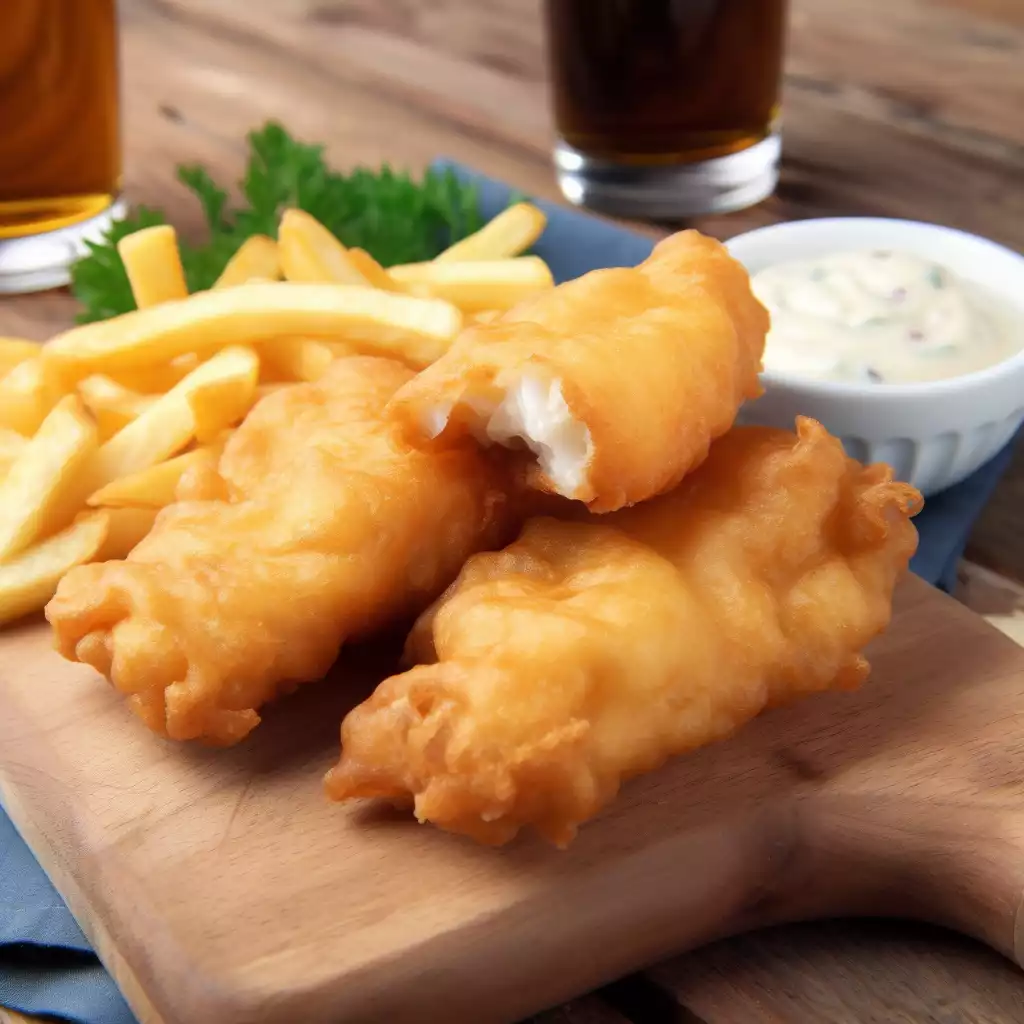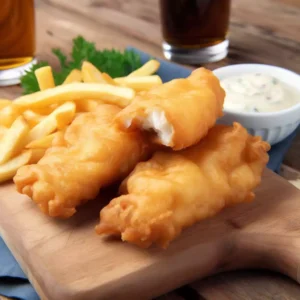
Battered fish, a classic favorite among seafood enthusiasts, brings together the crispy delight of a golden-brown coating and the tender flakiness of fresh fish.
Originating from the British tradition of fish and chips, this dish has traversed continents to grace dinner tables worldwide. Despite its simple ingredients, mastering the art of the perfect batter and achieving the ideal crunch requires finesse, making it a satisfying challenge for home cooks of all levels.
Crafted with care, the batter envelops each succulent piece of fish, creating a protective shield that locks in moisture and enhances the natural flavors of the seafood.
The combination of plain flour, baking powder, and sparkling water yields a light, airy texture, ensuring that every bite is a delightful contrast of crispiness and tenderness. With a hint of salt to balance the flavors, this recipe promises a sensory journey that delights the palate.
Preparing battered fish is a culinary adventure that offers both relaxation and excitement. From the rhythmic whisking of the batter to the sizzle of the hot oil, each step invites you to immerse yourself in the culinary process.
Whether you’re hosting a casual family dinner or impressing guests with a homemade feast, battered fish offers a versatile option that never fails to please.
Expert Tip: For an extra crispy coating, dredge the fish fillets in flour before dipping them in the batter. This creates a double layer of crispiness while also helping the batter adhere to the fish better.
Fish (Cod, Haddock): Fish provides a tender and flaky texture. Cod or haddock, with their mild flavors, are popular choices for battered fish due to their ability to hold up well to frying.
Plain Flour: The main component of the batter, plain flour helps create a light and crispy coating for the fish.
Baking Powder: Adding baking powder to the batter contributes to its airy texture, resulting in a fluffy and crunchy exterior.
Salt: A pinch of salt enhances the flavors of the fish and batter, providing a well-rounded taste.
Sparkling Water (Cold): Cold sparkling water is the secret ingredient that gives the batter its lightness and crispiness. The carbonation creates bubbles in the batter, resulting in a delicate texture once fried.
Vegetable Oil (For Frying): Vegetable oil is used for frying the battered fish. Its high smoke point ensures that the fish cooks evenly and achieves a golden-brown color without burning.
Expert Tip: Fry the battered fish in batches to prevent overcrowding the pan, which can lower the oil temperature and result in soggy fish.
Expert Tip: Ensure the fish fillets are patted dry before dipping them in the batter to ensure better adhesion.
Yes, you can use other types of white fish such as pollock or tilapia if cod or haddock are not available. However, keep in mind that different fish varieties may have slightly different textures and flavors.
Sparkling water helps create a lighter and crispier batter due to its carbonation. While you can use still water as a substitute, the texture of the batter may be slightly denser.
To check if the oil is hot enough, you can use a kitchen thermometer to ensure it reaches a temperature of around 180 degrees Celsius (350 degrees Fahrenheit). Alternatively, you can drop a small piece of bread into the oil – if it sizzles and turns golden brown within a few seconds, the oil is ready for frying.
It’s best to prepare the batter just before frying the fish to maintain its light and airy texture. If you need to make it ahead of time, you can refrigerate it for up to 30 minutes, but allow it to come to room temperature before using it.
Store any leftover battered fish in an airtight container in the refrigerator for up to two days. To reheat, place the fish on a baking sheet and bake in a preheated oven at 180 degrees Celsius (350 degrees Fahrenheit) until heated through and crispy.
Here are some more recipes for you to enjoy! If you my recipes don’t forget to rate and leave a comment.
If you have any recipe suggestions, please do not hesitate to ask me. A great way to stay in contact with me is through Instagram, Facebook, Twitter and YouTube. Don’t forget to tag me @CookwithNabeela in your recipe photos!

Subscribe now to receive my latest recipes directly in your inbox. Stay up-to-date and never miss out!

I love to cook! I want to share with you my favourite, delicious family-friendly recipes. I want to inspire you to create fantastic food for your family every day.
Add your first comment to this post